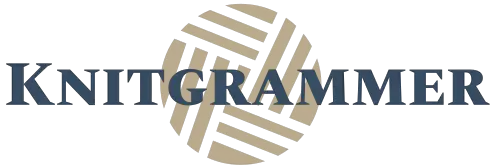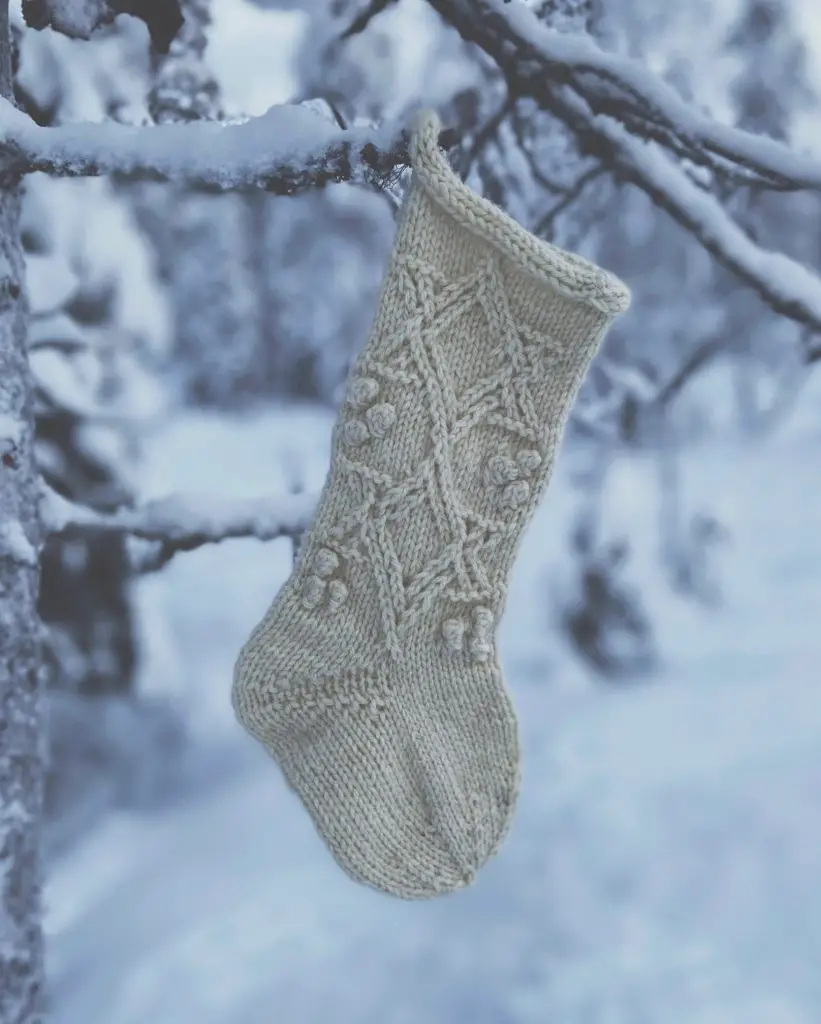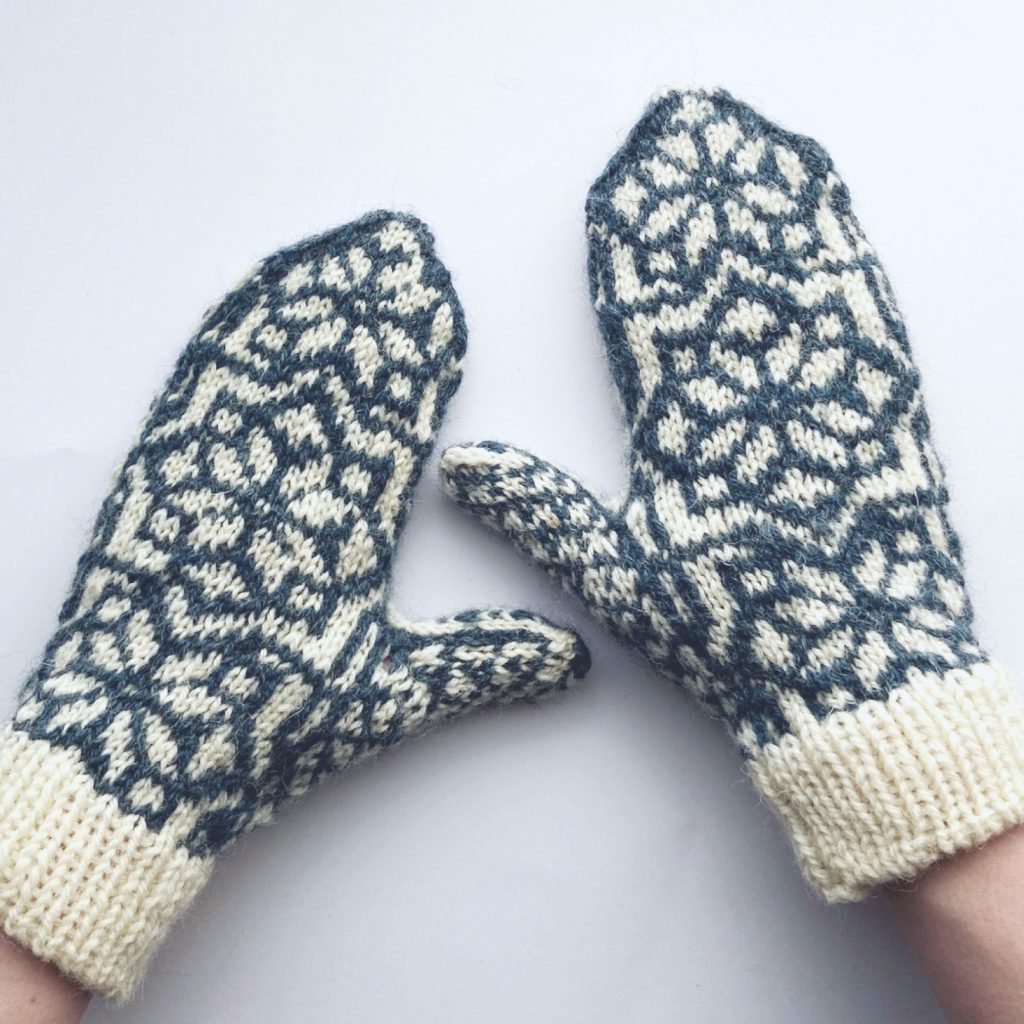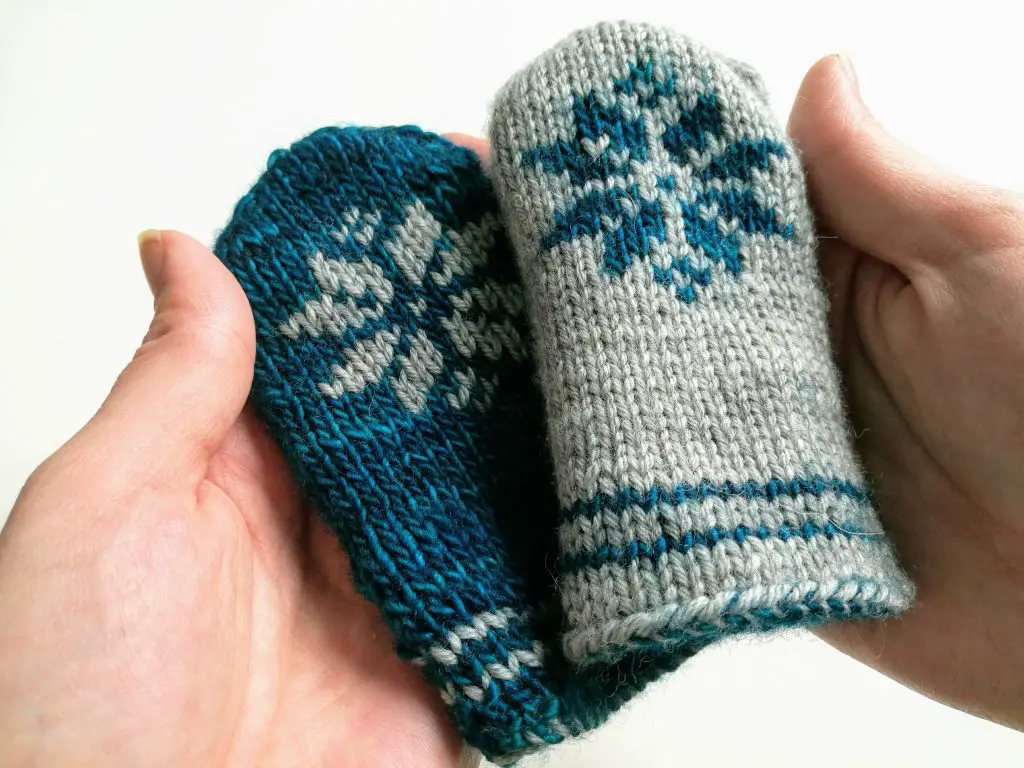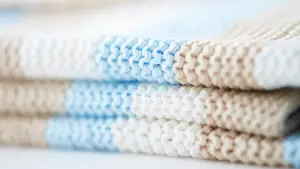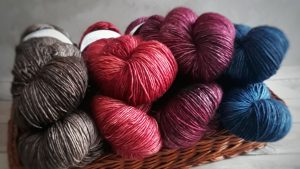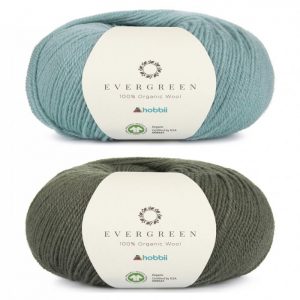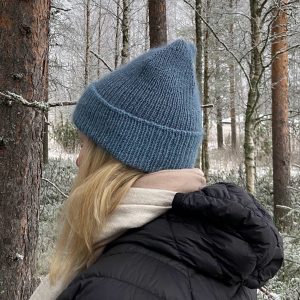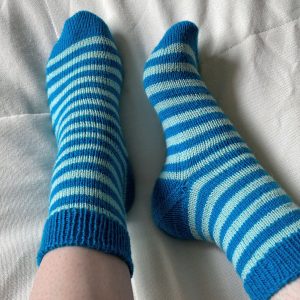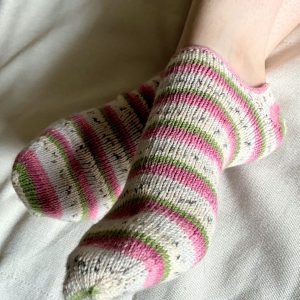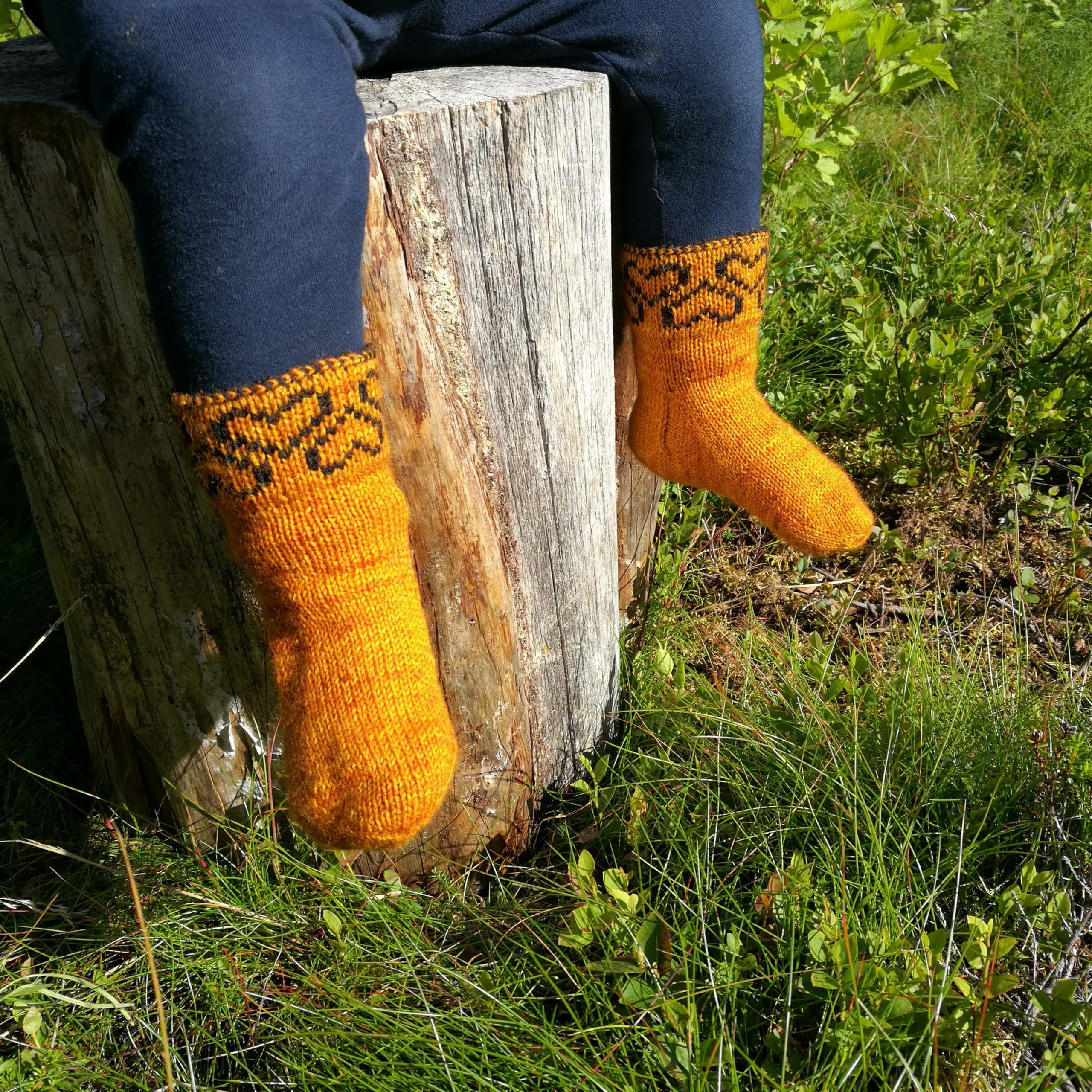There are an infinite amount of different knitting stitches but only a certain number of different techniques are used to create them. In this post, I have listed the main techniques. If there’s something missing please drop a comment below.
The Basic Stitches
The two basic stitches in knitting are the knit and the purl stitch. If you combine these two stitches you can make many of the basic knitted fabrics such as the stockinette stitch, garter stitch, reverse stockinette stitch, ribbing, and seed stitch.
- Garter Stitch (flat): You knit both right side and wrong side rows.
- Stockinette: You knit on the right side rows and purl on the wrong side rows.
- Seed Stitch: First you knit every other stitch and purl every other stitch. Then on the following rows you knit the purl stitches and purl the knit stitches.
- Ribbing: For instance 1-by-1 ribbing you make first by knitting every other stitch and purling every other stitch. Then on the following rows you always purl the purled stitches and knit the knitted stitches.
The most extensive knitting stitch dictionary published is the Vogue Knitting The Ultimate Stitch Dictionary. The book contains more than 800 knitting patterns and contains many basic patterns and some others as well.
Lace
Knitted lace is formed by combining yarn overs with different decreases. Yarn overs create holes and the decreases create lines. There are a number of decrease stitches you can choose from and it’s the choice and arrangement of these decreases that creates the lace pattern.
Maybe the most famous traditional lace patterns are the Feather and Fan and the Travelling Vine.
My favorite source of lace patterns is the Japanese Knitting Stitch Bible by Hitomi Shida.
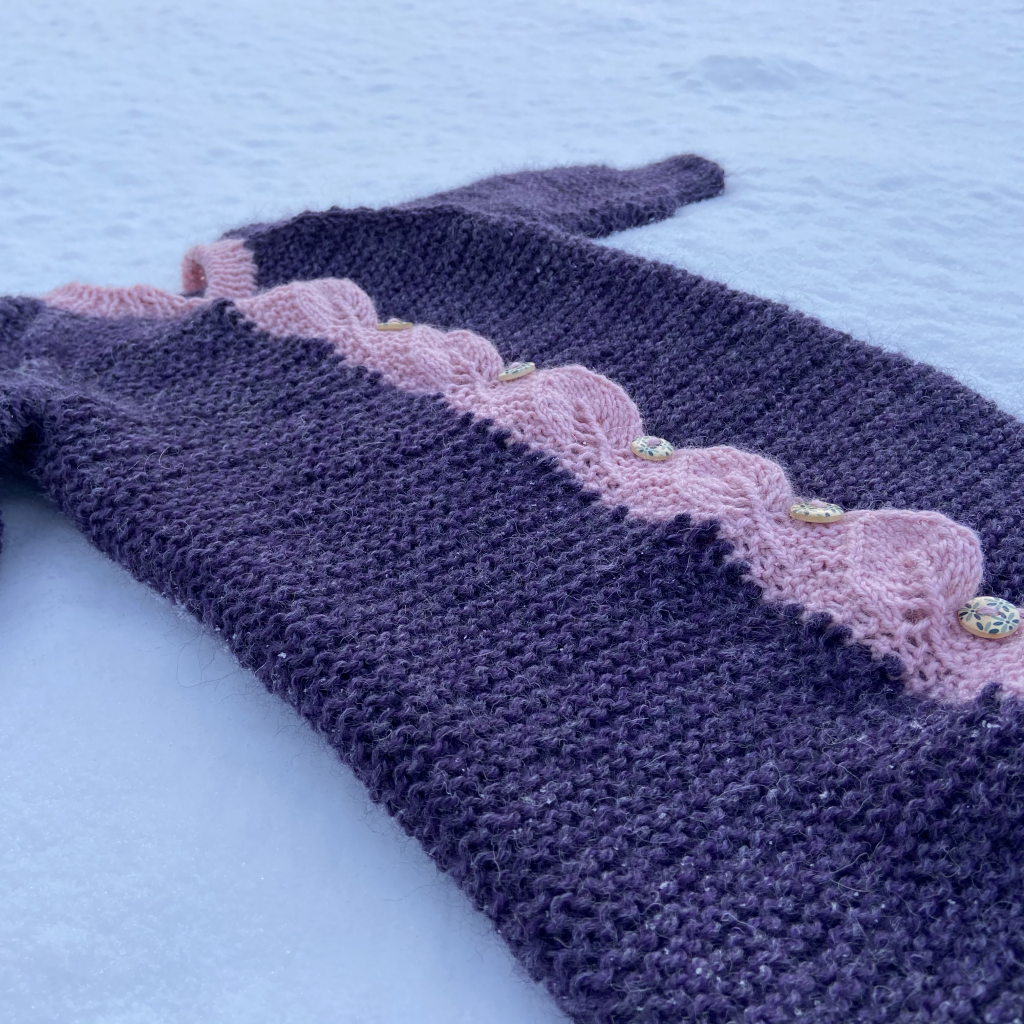
A very good lace knitting tutorial can be found on KnitPicks website.
Cables
Cables are formed by changing the order of knitted stitches. For instance, a basic 2-by-2 cable you knit by placing two stitches on hold and then knitting the next 2 stitches, and lastly return to knit the previous stitches you put on hold. As a result, these groups of stitches cross over or twist around each other.
You can make an infinite number of different cable patterns by varying the following factors:
- The direction they are twisted: Cables are twisted either to the right or to the left, and for this to happen, the first stitches are brought either to the back or to the front of the next stitches.
- The number of stitches you have for the cables: You can have for instance 2-by-2 cables or 6-by-3 cables.
- The number of rows you have between the cables: Typically you only work cables on right side rows and you can make the twisted for instance on every 4th right side row or every 6th right side row.
By far the best cable knitting resource I have found is the Knitted Cable Sourcebook by Norah Gaughan. It contains more than 150 cable stitch patterns and it also offers insight into how cables are engineered, how knitters can design their own, and how knitters can mix and match cables in a knitting pattern.
A very good cable knitting tutorial with images can be found on the KnitPicks website.
Twisted Stitches
The term twisted stitch has two meanings in knitting:
- A stitch that is knitted or purled through the back loop.
- Stitches that look like 1-by-1 cables but are worked in a way that makes them pop out of stockinette fabric, unlike cables.
In this section I mean the latter one.
This technique is great because you can create nice textured patterns without a cable needle.
If you are looking for ideas what kind of patterns you can made with twisted stitches please take a look at the The Twisted Stitch Sourcebook by Norah Gaughan. The book contains more than 125 stitch patterns with guidance on how to design your very own.
Stranded Colorwork
Stranded colorwork is a technique for working two or more colors of yarn in the same row. While working the stitches with one color you carry the other strands of yarn you aren’t knitting with across the back of the work as you go.
There are different styles of stranded colorwork such as Fair Isle and Scandinavian. The patterns and use of colors are different between them. However, nowadays many knitters use the term “Fair Isle” to refer to any style of colorwork knitting.
Traditional Scandinavian motifs you find on the book 150 Scandinavian Motifs: The Knitter’s Directory and traditional Fair Isle Motifs on the book 200 Fair Isle Motifs: A Knitter’s Directory.
Slip Stitches
Slip stitch knitting is a technique where stitches are moved from the left needle to the right needle without working them. It’s a great technique for creating gorgeous textures with minimal effort.
You can create different variations by changing the number and placement of stitches you slip. In addition, it matters whether you slip the stitch with yarn in front or back of the work.
For instance, the linen stitch in the video below is created using only 1 color at a time.
My favorite source for slip stitch patterns the Art of Slip-Stitch Knitting.
Mosaic Knitting
Mosaic knitting is a technique where you knit with two or more colors and form a pattern by slipping the stitches from previous rows. I think this is a great method for beginners to add color to their knits since you only work with one color at a time and you don’t have to worry about catching the floats for instance.
For some inspiration I recommend you to check the Mosaic Knitting by Barbara Walker. It contains more than 200 mosaic knitting designs.
A very good mosaic knitting tutorial with images can be found on the KnitPicks website.
Brioche Knitting
Brioche knitting generates a cushy and reversible fabric. The basic stitch looks like ribbing but the feel of the fabric is different because there are two layers of knitting. The basic fabric is achieved by alternating columns of slipped stitches with yarnovers and knit stitches or purl stitches.
You can create stunning patterns by combining different increases and decreases. The patterns are especially stunning if you knit brioche in two colors.
The most extensive collection of brioche stitches can be found in the book Knitting Fresh Brioche by Nancy Marchant. For advanced knitters I recommend the Knitting Brioche Lace book that takes brioche knitting to a whole new level.
A very good brioche knitting tutorial can be found on the KnitPicks website.
Double Knitting
Double knitting is a technique that allows you to create two layers of fabric at the same time, with only one pair of needles.
The finished fabric is entirely reversible and very stretchy unlike the fabric created by using the stranded colorwork technique. On the “wrong” side the colors are just reversed.
Illusion Knitting
Illusion knitting also known as shadow knitting is a technique in which the knitting is viewed as simply narrow stripes from one angle, and as an image when viewed from another angle.
For creating this kind of fabric you need two colors of yarn. You work stripes with the yarn and the image is created with different combinations of knit and purl stitches. Check out for instance this knitted Albert Einstein. It’s one of the most stunning knitted pieces I’ve ever seen.
The basics of illusion knitting you can learn from the video below.
Dropped Stitches
Normally dropping a stitch while knitting would be a bad thing but it can also be used as a design element.
One of the most popular drop stitch patterns is the Sea Foam Stitch. Take a look at the video tutorial below.
You can create very interesting fabric by combining cables and dropped stitches. Take a look for instance this beautiful design by Yumiko Alexander.
Bobbles
Bobbles are a great way to add three-dimensional texture to your knitting. There are many ways to make bobbles and below are a few different examples:
Enterlac
Entrelac is a knitting technique that produces a fabric with a woven appearance. It looks like the fabric consists of many small pieces but it’s actually worked in one piece.
